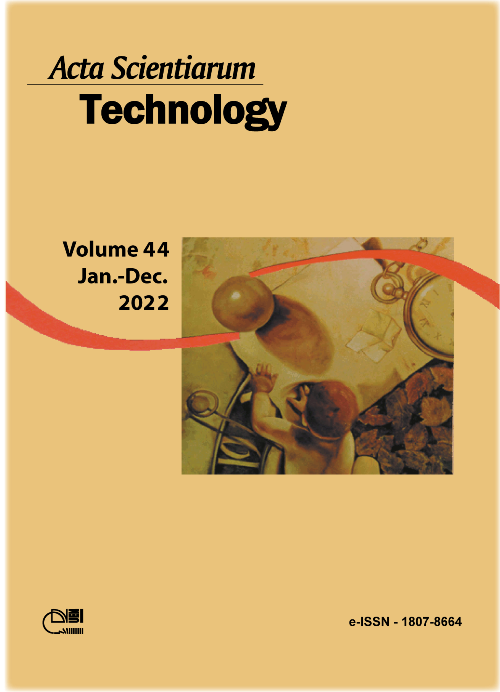Formulation optimization of low-fat emulsion stabilized by rocket seed (Eruca Sativa Mill) gum as novel natural fat replacer: effect on steady, dynamic and thixotropic behavior
DOI:
https://doi.org/10.4025/actascitechnol.v44i1.56006Keywords:
Low fat emulsion; gums; rheology; fat replacer.Abstract
This study aims to investigate the use of Rocket seed (Eruca Sativa Mill) gum (RSG) as a novel fat replacer in the formulation of low-fat emulsion. For this purpose, formulation of the salad dressing was optimized by using response surface methodology (RSM) based on the rheological properties measured by steady shear (K), dynamic rheological analysis (K', K''), and three interval time test (Deformation (%) and Recovery (%)). All samples showed shear-thinning character and viscoelastic solid character. Herschel Buckley model parameters, namely, t0, K, and n values, were changed between 0.36 and 12.58 Pa, 1.67, and 27. 12 Pa.sn, 0.15 and 0.27 respectively. In all samples, the G' value was higher than G'' in all frequency range. The samples containing high RSG showed a lower percentage of deformation (Def %) and higher recovery (Rec %) values. Optimization was performed based on the rheological properties of the control samples, and the optimum formulation of low salad dressing was 3.73 % RSG, 10 % oil, and 1 % EYP. Low-fat salad dressing samples stabilized by RSG and control samples showed similar characteristics in terms of particle size, PDI, zeta potential, and emulsion stability index values. This study suggested that RSG could be used as a natural fat replacer in low-fat salad dressing type emulsions.
Downloads
Downloads
Published
How to Cite
Issue
Section
License
DECLARATION OF ORIGINALITY AND COPYRIGHTS
I Declare that current article is original and has not been submitted for publication, in part or in whole, to any other national or international journal.
The copyrights belong exclusively to the authors. Published content is licensed under Creative Commons Attribution 4.0 (CC BY 4.0) guidelines, which allows sharing (copy and distribution of the material in any medium or format) and adaptation (remix, transform, and build upon the material) for any purpose, even commercially, under the terms of attribution.
Read this link for further information on how to use CC BY 4.0 properly.











8.png)




